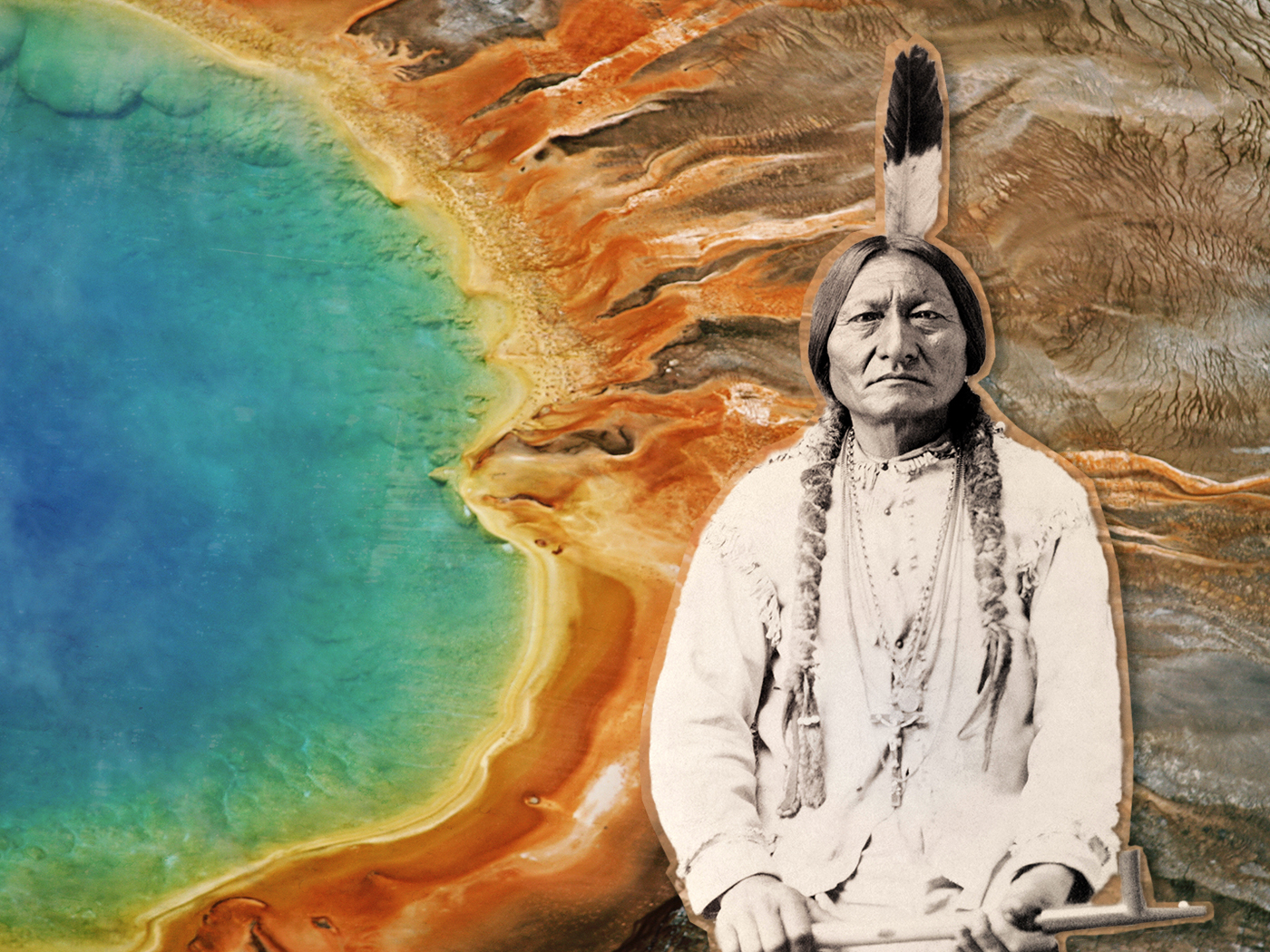How Sitting Bull's Fight for Indigenous Land Rights Shaped the Creation of Yellowstone National Park
The 1872 act that established the nature preserve provoked Lakota assertions of sovereignty
Megan Kate Nelson
Author, Saving Yellowstone: Exploration and Preservation in Reconstruction America
March 1, 2022

The exploration and preservation of Yellowstone in 1871 and 1872 has long been recognized as a central moment in the history of American conservation. Less well known is its role in shaping Lakota history and U.S. Indian policy. Photo illustration by Meilan Solly / Photos by Universal History Archive / Getty Images and Smith Collection/ Gado / Getty Images
Signed into law exactly 150 years ago, the 1872 Yellowstone Act proposed a massive government acquisition of more than 1,760 square miles in Wyoming Territory (an area larger than the state of Rhode Island). Now Yellowstone National Park, the tract of land included the Yellowstone Basin’s astounding geysers and other geothermal features, as well as its canyons, valleys, waterfalls and lakes. Legislators introduced the bill after geologist Ferdinand Hayden returned from a congressionally funded expedition to this “land of wonders” in the fall of 1871, bringing back 45 boxes of specimens, along with photographs and illustrations of the basin’s unique features.
As members of the House of Representatives debated the act in late February 1872, they focused on the threat it might pose to white settlers’ land rights. Then, John Taffe, a Republican from Nebraska and the chairman of the Committee on Territories, announced that he had a question: “It is whether this measure does not interfere with the Sioux [Očéthi Šakówiŋ] reservation.”
As members of the House of Representatives debated the act in late February 1872, they focused on the threat it might pose to white settlers’ land rights. Then, John Taffe, a Republican from Nebraska and the chairman of the Committee on Territories, announced that he had a question: “It is whether this measure does not interfere with the Sioux [Očéthi Šakówiŋ] reservation.”
Lakota peoples didn’t encounter large numbers of white migrants in their homelands until the summer of 1862, when thousands of gold miners began streaming toward the northern Rocky Mountains from boat landings on the Upper Missouri River. At the time, Lakota lands extended west from that river (which they called Mníšoše) to the Rockies and as far south as Colorado. Yellowstone Basin, located at the far western edge of their lands, was a shared Indigenous landscape used as a thoroughfare and hunting ground by many tribal nations.
More:
https://www.smithsonianmag.com/history/how-sitting-bulls-fight-for-indigenous-land-rights-shaped-the-creation-of-yellowstone-national-park-180979630/
